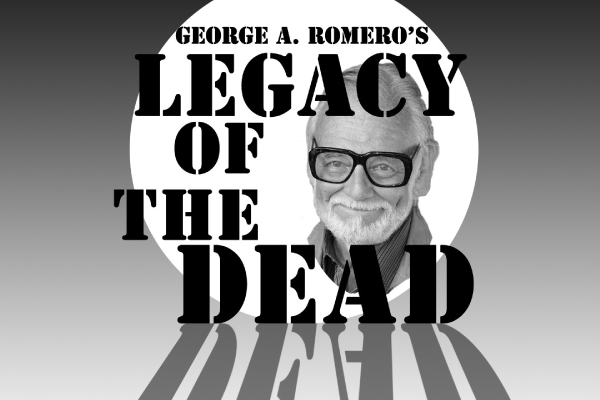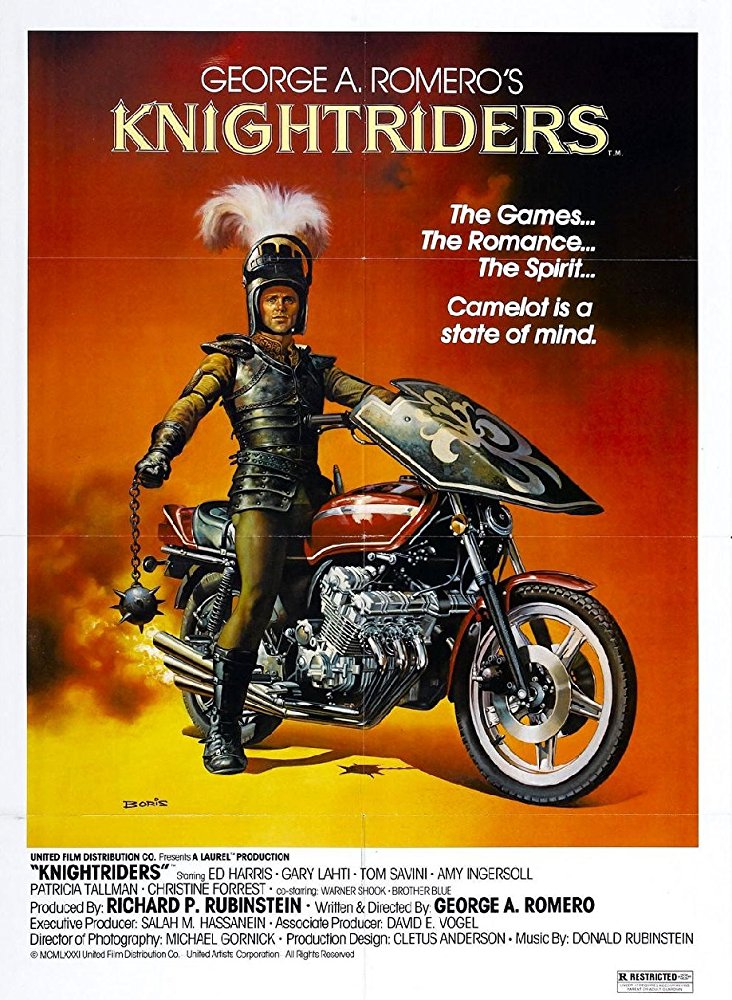
Mention the name of George Romero and 'zombies' is the next word to pop into nearly anyone's head. It's ironic then that the filmmaker frequently lamented that he was 'stuck in this niche with horror' and that his two favorite films were Martin (a vampire story) and his pseudo-Arthurian drama Knightriders. Released in 1981, Knightriders is the major outlier of Romero's career. It's his longest film, it includes no horror elements, and it was one of his least successful efforts at the box-office. At the same time, however, it features some of the most skillfully calibrated performances in any Romero film, is perhaps his most thematically and dramatically nuanced work, and manages to intelligently capture the spirit of Arthurian legend in a thoroughly modern context. Rather than a neglected backwater of the director's resume it should, in other words, be primary evidence in any discussion of his place in the pantheon of filmmakers.

The plot of Knightriders follows a traveling utopian community patterned after medieval legends of King Arthur. In his first starring role, Ed Harris plays the benevolent 'king' of the troupe (Billy), struggling to maintain the purity of the group's ideals in the face of a variety of threats. Those challenges are both external (the encroachments of celebrity and commercialism) and internal (regular confrontations with his rival Morgan, played by Tom Savini). The community earns its living by travelling from town to town and holding jousting contests for local audiences, but those contests, and the chivalric code they embody, are also an important part of the social structure. The victor wins not only bragging rights, but the authority to rule over the 'kingdom.' Originally Romero intended that the jousts be on horseback, but low budget producer Sam Arkoff convinced him that the horses should be replaced by motorcycles.
The performances of Harris and Savini are key to the success of the film. Savini, a long-time friend of Romero's and a CMU alumnus, is primarily known for his special effects work, but in Knightriders he has the tricky task of playing the main antagonist without being overly antagonistic. The audience is meant to be sympathetic to his arguments that the standards set by Billy should be more malleable, but without entirely taking his side. Savini threads the needle perfectly, maintaining an ingratiating undertone while progressing from menacing to crass to chastened. His performance is the perfect counterweight to the studied gravity of Harris, who must embody a set of high ideals, without being priggish. Harris, at the beginning of a respected career, conveys a suitably tortured seriousness as he struggles with the pressures bearing down on his personal Camelot.
Romero considered the Billy character a stand in for himself, and the thematic concerns of the film reflect larger issues with which the filmmaker himself wrestled. How much should any of us be willing to compromise our core beliefs? How rigid is too rigid? These questions are explored against the backdrop of a community which embodies an egalitarian ideal, and which features a diverse cast. The variety of opinions regarding how these issues should be addressed form the core conflict of the story, but all aspects of the question are handled sensitively and sympathetically.
The fact that these concerns are set in a cross between a contemporary environment and Arthurian legend made the promotion of the film problematic. The image of a knight riding a motorcycle is easy to misunderstand (which Romero himself acknowledged), but perhaps the most interesting aspect of the film is the way in which it captures the larger appeal of the legend of Camelot without shading into any kind of parody or ridicule. There are reasons that the Arthurian tales continue to be culturally relevant and Knightriders makes those reasons clear to a modern viewer in a contemporary setting.
Audiences did not know what to make of Knightriders and stayed away in droves, an injustice which has continued to this day. That fact is especially ironic given that Romero later claimed that it was the key film for 'people who want to know what makes me tick.' Given the popularity of his horror efforts the failure of this heartfelt and personal project must have stung, but the failure of audiences to appreciate this thoughtful rumination on larger themes is in some ways a justification of the impulses that drove Romero to make the film in the first place. We can only hope that the reassessments of his career now underway will encourage audiences to see this film as he did, as a major work of a serious filmmaker who also happened to make some movies about zombies.
Internet Movie Database (N.D.). 'Knightriders Poster' (1981)
by Jeff Hinkelman, Video Collection Manager
